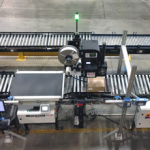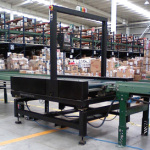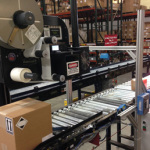Cubiscan Integration Services provides engineering, installation, and support for fixed barcode scanning systems. CIS provides both laser and camera-based systems to read barcodes in motion from single or multiple sides. Projects range from simple read/write of barcode data from a single source to multiple reads, decision points, and data integration with equipment, controls, software, and peripherals.
Applications for Fixed Barcode Scanners:
Aside from reading barcodes and RFID tags, fixed scanners and cameras can be used to reliably sort, count, measure, inspect, recognize, and verify the position, size, and overall shape of objects passing along a conveyor. They perform these tasks through a number of features. Contrast sensors identify differences in brightness and color. Luminescence sensors recognize any fluorescent markings, labels, threads, lubricants, and adhesives. And color sensors identify and differentiate different objects by color.
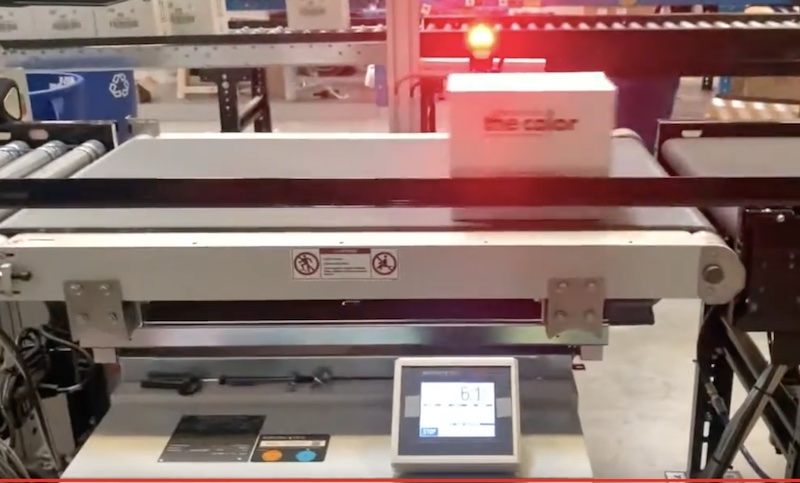
Cubiscan Integration Services scanning systems include barcode scanners, omni scanners, camera/vision-based reading systems, integration software, and dimensioning products. The services and product lines we offer will cover the broadest range of warehouse solutions for automatic identification applications, including the following:
- Receiving and returns
- Verification and readability validation
- Scanning tunnels, multi-sided barcode scanning, and data collection
- Conveyor mounted scanners material handling for warehousing and distribution
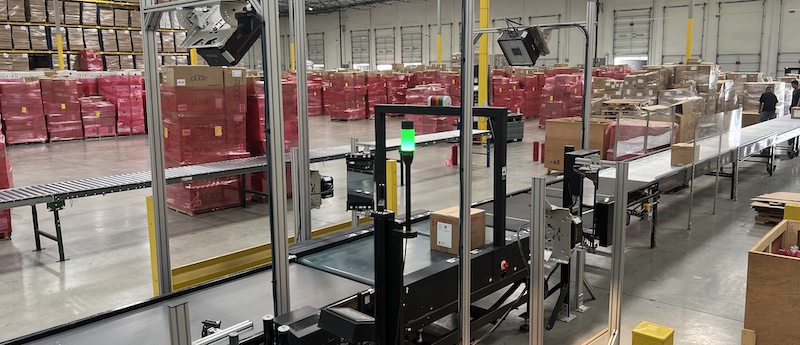
Barcode Scanning System Installation and Services
While it’s true that warehouses are not typically elaborate or complex spaces, each one has its own set of nuances. That’s why Cubiscan Integration Services creates automation solutions that are custom designed for each of our client. Our goal is to design a uniquely optimized configuration of barcode scanner systems, conveyor systems and automation processes that will accelerate logistics and workflow. There is no out-of-the box solution. Great warehouse automation solutions are born from a multi-stage process. If the goal is to provide our customers with the most simple, and high-speed system possible, there are a handful of factors to be considered. Before a single conveyor or barcode scanning system can be delivered we first have to consider the following.
- Analysis for in-motion barcode scanning applications
- Fully engineered application before a system is sold
- Mechanical and electrical systems install
- Software and controls
- 100% commissioned and live line testing
- Service, spares, support
ROI and System Justification:
Warehouse automation reduces distribution and logistics costs over the long term by reducing manual labor costs, and in many cases, saving tremendous amounts of floor space, increasing both workforce efficiency and warehouse capacity. In short, an automated warehouse can do more with less. With an automated system, order accuracy improves as well. Also, when workflow spikes the way it does for many industries during the summer or holiday seasons, for example, the automation system will be able to keep up with the increased output. So the need to periodically add temporary bodies to the workforce no longer occurs year after year.
Once a company establishes a warehouse automation system that satisfies all of their needs, returning to a conventional warehouse system is practically unheard of. Even putting aside all the long-term savings projections that will recoup the purchase price of conveyors and barcode scanning systems costs in short order, there still should be some return in the existing business model that justifies automating some or all of the shipping and manifest processes all by itself.
Here’s a brief summary of areas where warehouse automation can be expected to pay dividends.
- Optimize Existing Labor Force: Typical-end-of-line shipping areas employ the labor of people who manually scan, weigh, and manifest each shipment. This labor is better utilized in places that provide more value to the operation or may be eliminated altogether.
- Order Accuracy Improvement: Orders are often manually inspected for quality control. Much of this work may be automated with expected weight comparison to actual weight or other means. Mistakes from boxes with mismatched labels applied are easily rectified with automation.
Reduce Seasonal Temporary Labor Needs: Many DCs hire seasonal temps to keep up with spikes in demand. Automated manifest lines are able to handle constant, year-round workflow and virtually eliminate drastic increases in workforce.

